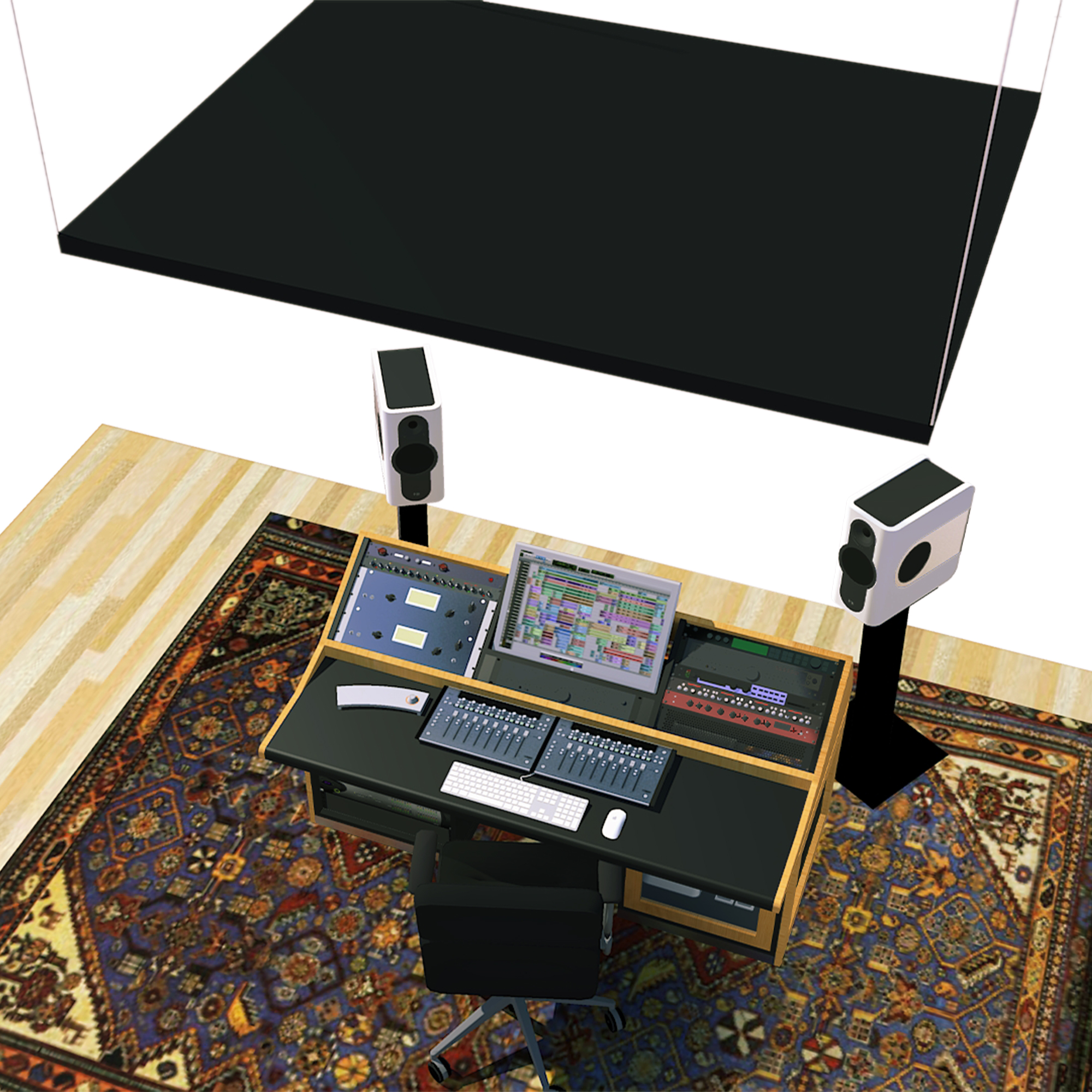A desk for recording studio is called a DAW. This acronym stands for Digital Audio WorkStation. Your workstation is personal to you and you must decide what features and benefits that you must have in order to perform the tasks you are doing within your room. Are you in a control room monitoring live musicians? Are you mixing already recorded tracks into a song? Are you a hobbyist, semi-pro, or professional engineer who makes their living from the DAW and the room in which it is placed. You must use the same care and attention in choosing your desk for recording studio as you do the room in which you place your desk within. There is a balance between desk size and room size that must be realized and obeyed if you are to get the most out of your rig and the room. They both work together or against you in creating your product whatever skill level you are at.
A desk for recording studio must have all the features and benefits you need to have to perform your tasks. Speakers are the first piece of gear you will need. It is best to set your speakers up on independent stands that sit in front of your desk for recording studio. If you place your speakers on separate stands that do not make contact with the desk. Vibration from the speakers will travel through your desk and into your amplifiers and electronic processing. Another advantage to independent stands is that you can use the stand to manage low-frequency energy from the front wall to your desk for recording studio. The wall (front) wall behind the speakers is the area within the room that will have the highest amounts of low-frequency pressure build up. When we treat existing rooms we always focus on the two sidewalls along with the front wall as minimum surface areas to treat since they represent the biggest surface areas to treat for low-frequency pressure management.
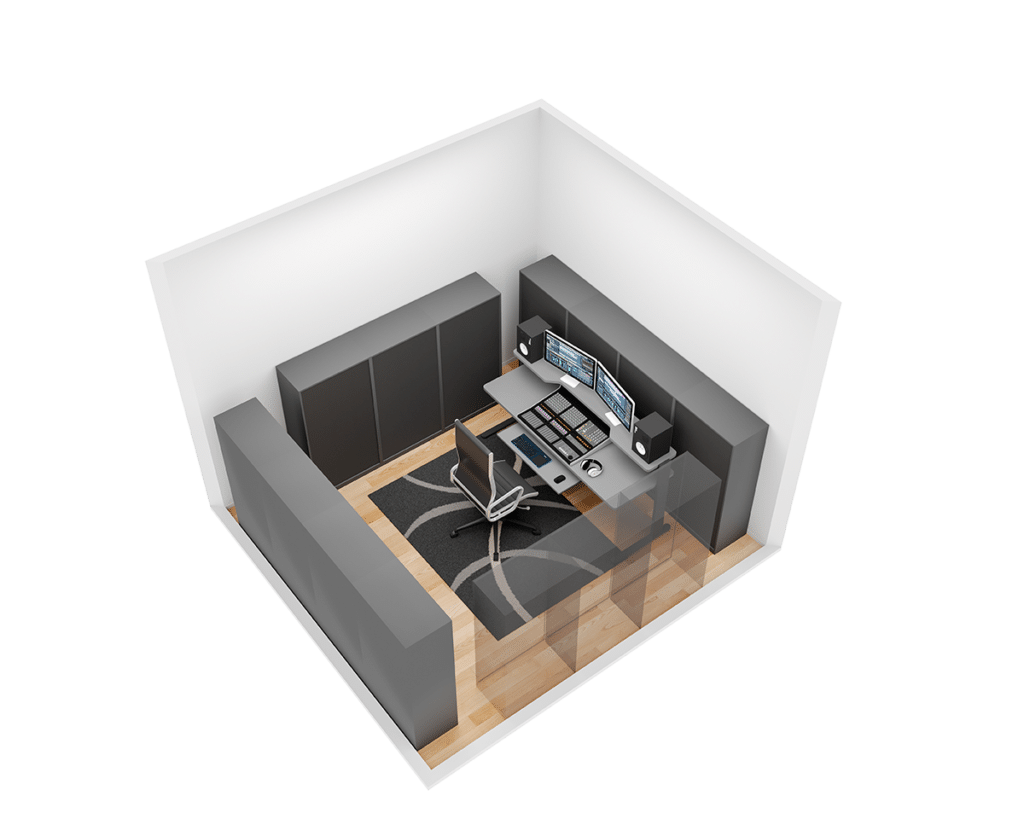
Another area of low – frequency pressure build up is the floor to ceiling dimension. The floor to ceiling dimension is usually the smallest of the three dimensions and thus produces the most low-frequency modal pressure issues. We have two options for treatment. We can treat the ceiling or we can treat the floor. Treating the ceiling in an existing room for low-frequency management is difficult due to the weight of low-frequency absorption. To manage this unwanted floor to ceiling low – frequency energy, we have created our DAW Platform https://www.acousticfields.com/product/daw-platform/ . Our DAW Platform is our proprietary carbon technology that is 10″ high and starts absorbing energy at 40 Hz. which is the starting point for low-frequency pressure issues with 8′ ceilings. If you can not treat the ceiling, you must treat the floor with low-frequency management. The sidewalls are your next focus for low-frequency treatment. http://artsites.ucsc.edu/ems/music/tech_background/TE-02/modes/Modes.html
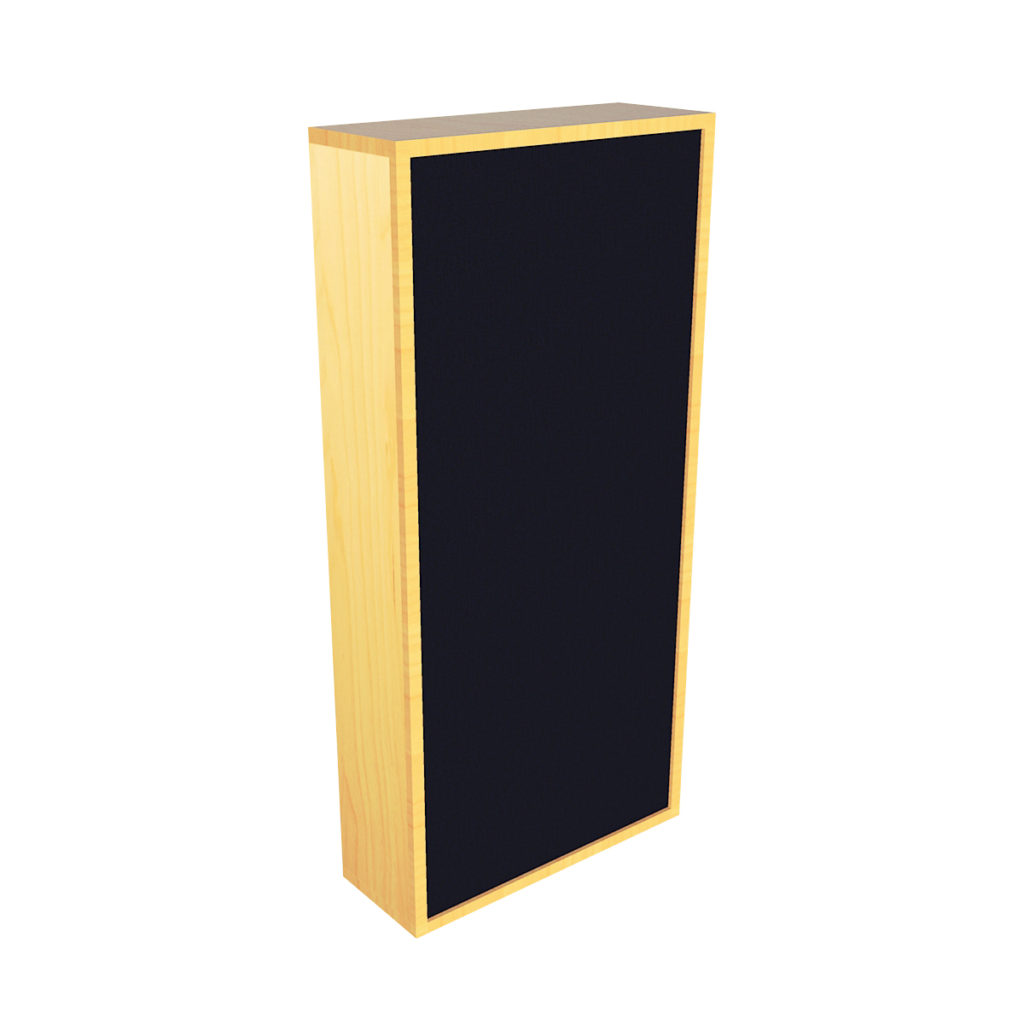
The sidewalls in small rooms are the source of more low-frequency loading issues and must be treated. Along with the DAW and our Carbon Speaker Stands are two methods for those surface areas. Our Carbon Panel is designed to treat the walls with the proper rate and level of absorption to manage low-frequency energy. Our Carbon Panel https://www.acousticfields.com/product/carbon-panel/ goes down to 40 Hz. and absorbs through 6,300 Hz. This is the frequency range that your music is mixed within. It makes sense to use the same rate and level of absorption within the frequency range in which your music was mixed. Our Carbon panels are 12″ deep and are on casters. You simply move them into place against the wall and you are ready to go with the room usage. In an ideal room, you would treat all 4 walls and the floor or the ceiling or in some cases you would treat both the floor and the ceiling.
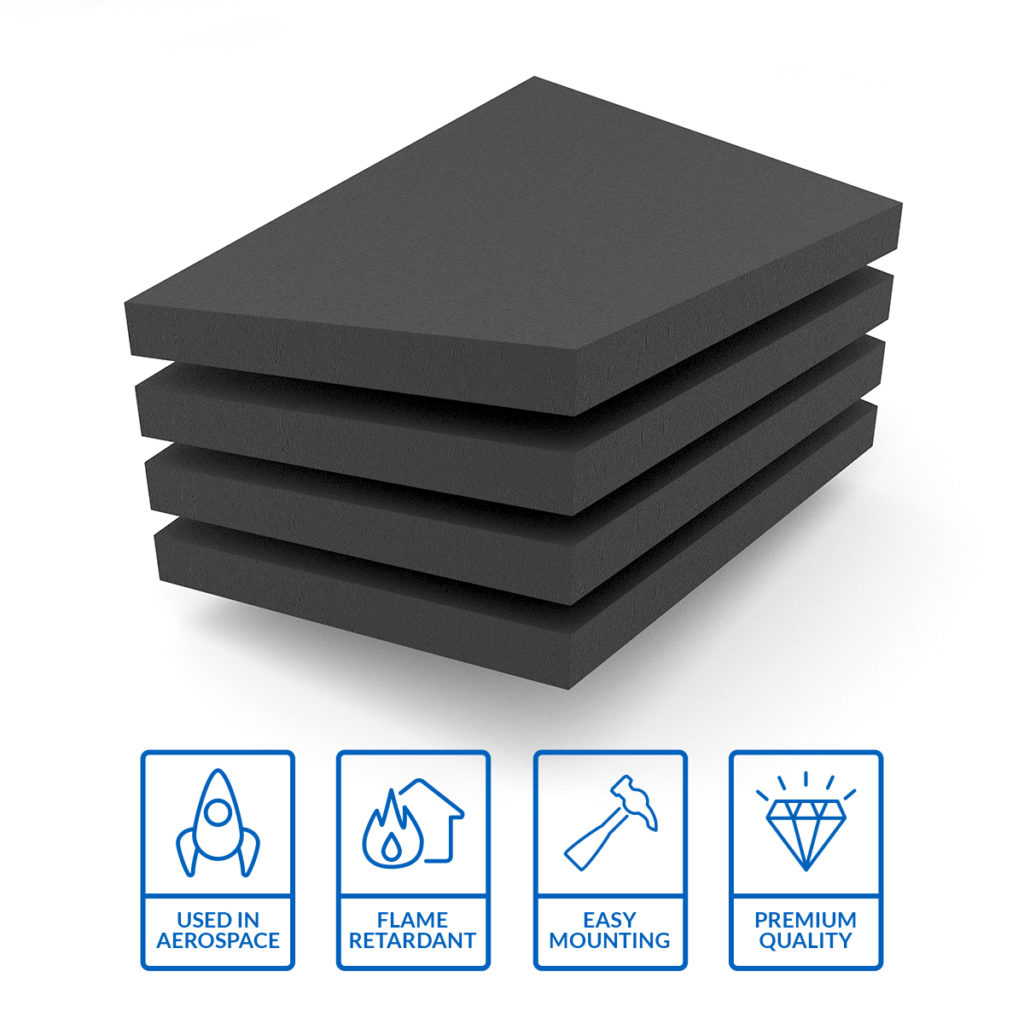
You must also treat the middle and high frequency issues to manage reverberation times within the room. The issue with middle and high frequency issues is termed reverberation which are caused by reflections from your wall surfaces and then added together to produce what we call high reverb times. https://www.merriam-webster.com/dictionary/reverberation This treatment type is less expensive than low-frequency management and can be treated with open celled foam technology. Make sure you choose an open celled foam for your absorption requirements. make sure you choose a foam technology that was specifically designed for music and voice. Our foam technology took 8 years and 2 M to produce the smoothest absorption curves in the business for music and voice. Music and voice are special and require special rates and levels of absorption to manage them correctly. Stay away from panels filled with building insulation since they over absorb and drain the life out of music and vocals. Stay with technologies that are specifically designed for music and voice and not noise. https://www.acousticfields.com/product/acoustic-foam/
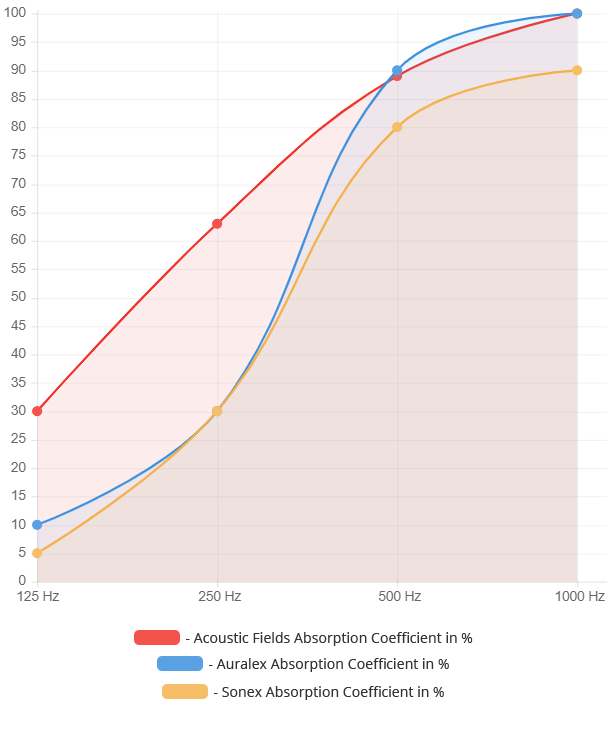
Once you have the room properly treated, you will need to do your set up of your desk for recording studio. The desk must be set up at the location within the room after treatment that produces the smoothest frequency response. This will vary from room to room and the amount of low-frequency management you have within the room. Your setup must include your desk and chair. The distance from each wall surface area must be calculated. At Acoustic Fields, we can assist you with that process by filling out our room form. This is a free analysis that will select the proper treatment types for your room along with the amounts and proper positioning of all low, middle, and high frequency issues. Fill out all the information in the link and you can include up to 4 pictures of your room so we can better understand your room layout and structure. https://www.acousticfields.com/free-room-analysis/


